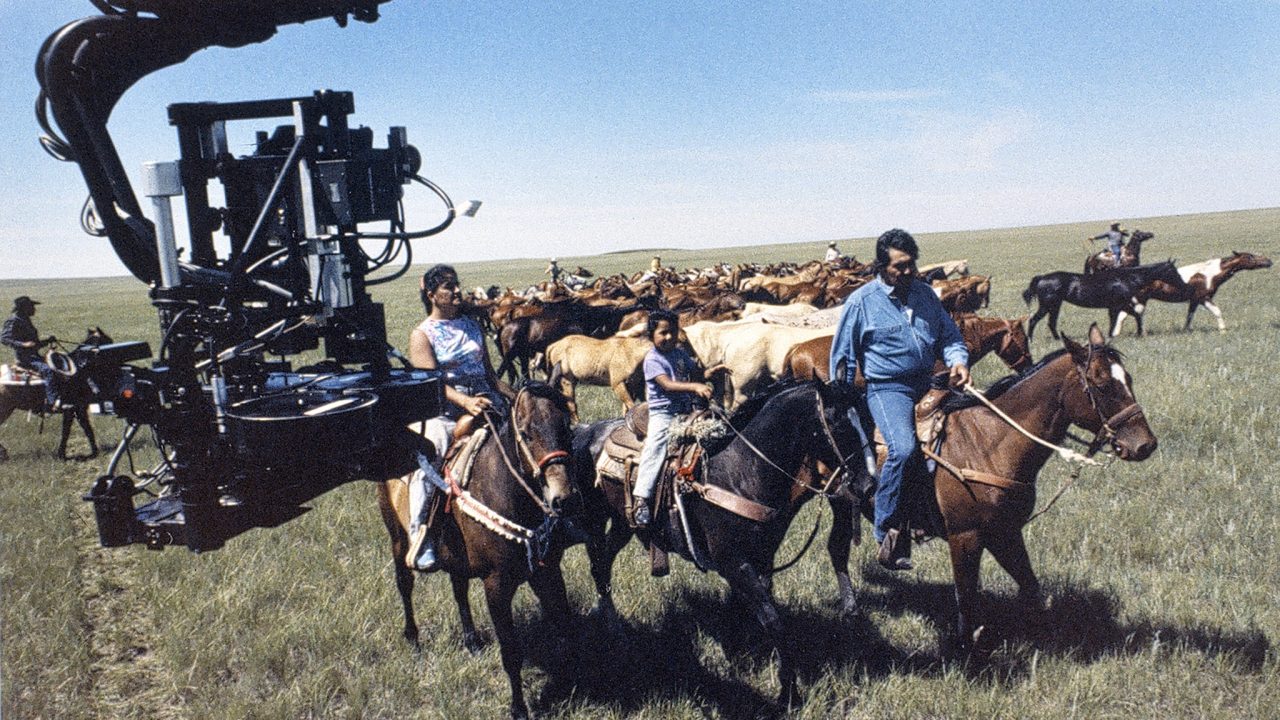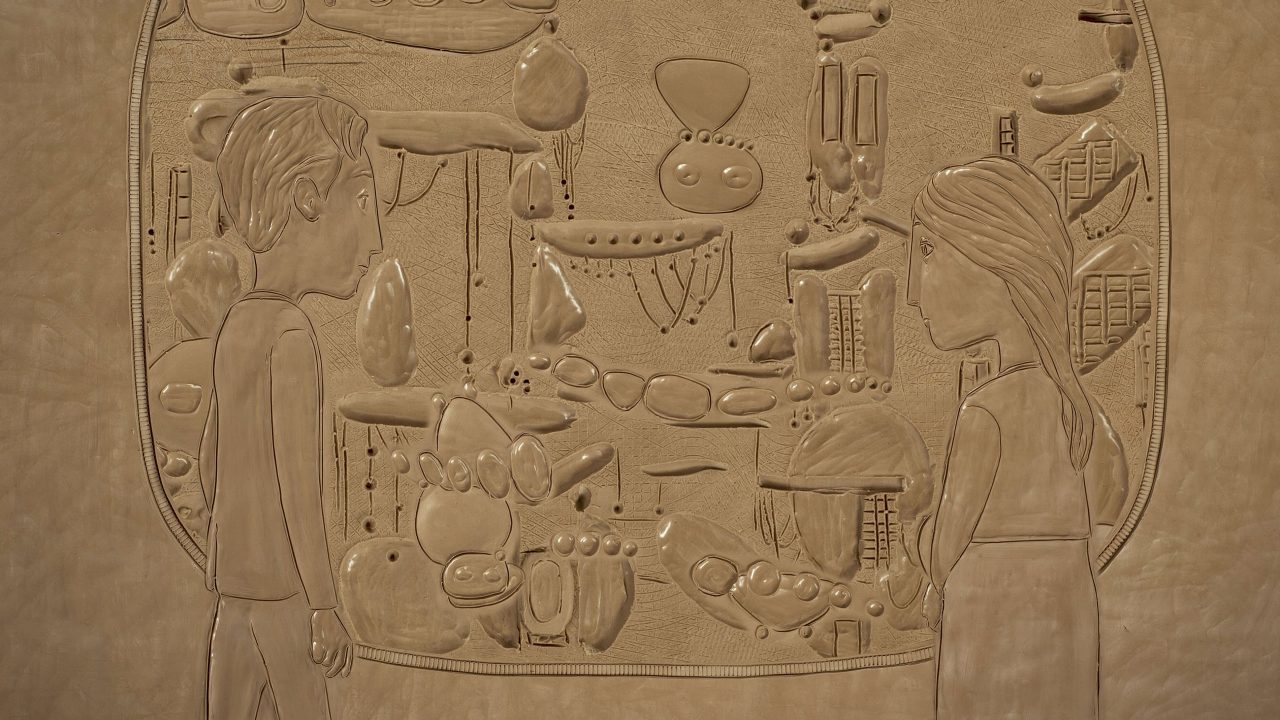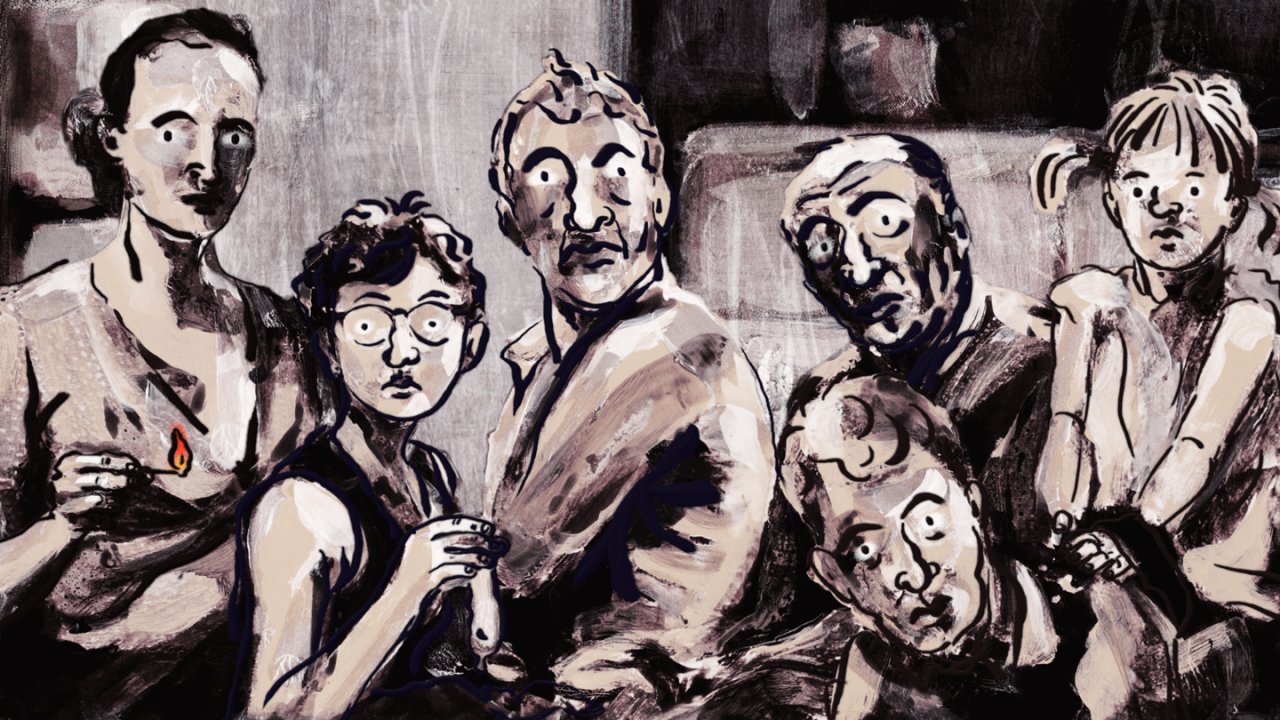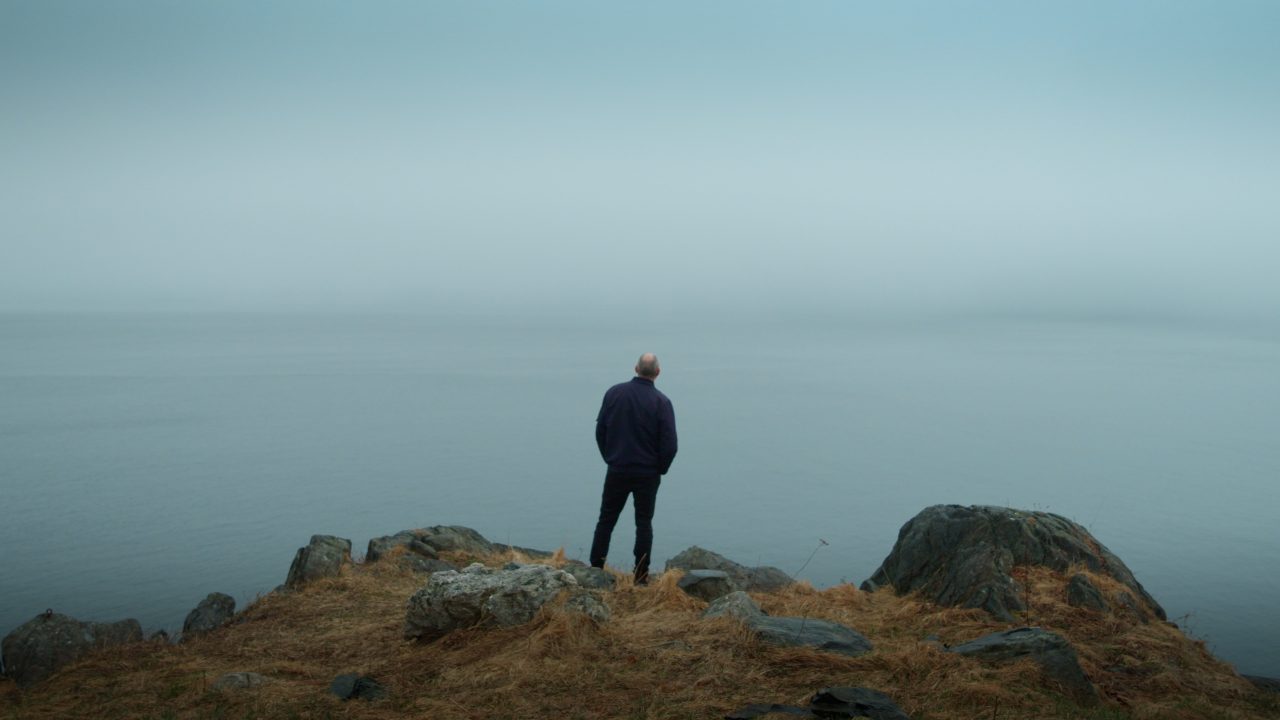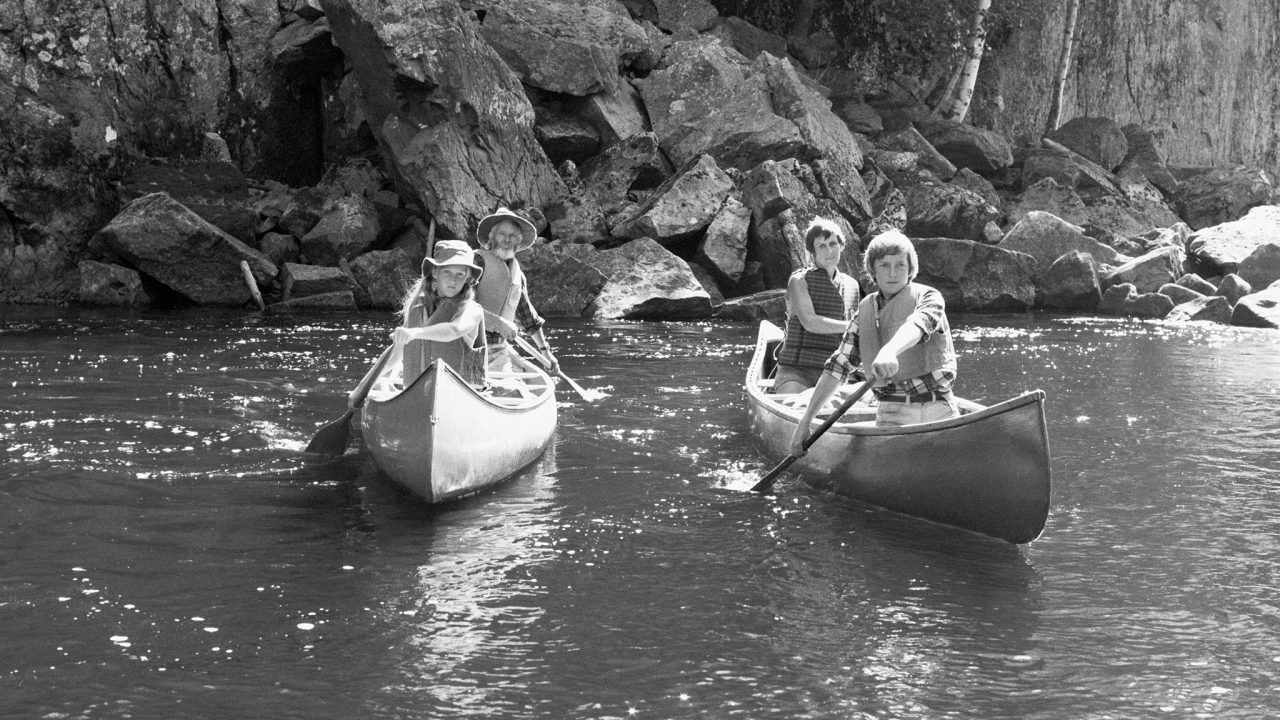
Song of the Paddle: A True Family Film | Curator’s Perspective
Song of the Paddle: A True Family Film | Curator’s Perspective
In the mid 1970s, filmmaker Bill Mason submitted a proposal to the National Film Board to make three instructional films on canoeing and a film about canoe-camping. These projects were approved, and Mason ended up expanding this to four instructional films (the Path of the Paddle series), as well as a much more personal film on canoe-camping starring his family. This latter film, the beloved Song of the Paddle, is the subject of my blog post today.
Over the years, Path of the Paddle has become a very popular series of instructional films. But it was the fifth film in the series, Song of the Paddle, that won praise all around the world. This isn’t surprising, because Song of the Paddle is a beautiful film that shows a family who clearly enjoy being together and exploring the wilderness. I think that it is this obvious happiness that has made the film resonate with audiences worldwide.
When Mason got the green light, he filmed sequences of his wife, Joyce, and their children, Becky and Paul, laying out the equipment needed for a canoe-camping trip on tarps outside their home. The idea was to explain to audiences what the best way was to prepare for such a trip and what equipment was essential. When they showed this footage to their producer, Bill Brind, he immediately told them that this was not the film the NFB wanted. They wanted a film that focused on the family first and foremost.
The Masons had to change their approach. Over the next two years, they went on numerous canoe-camping trips accompanied by cameraman Ken Buck (who had worked with Bill Mason on Path of the Paddle and had become a family friend) and his wife, Susan. Working as a one-man crew, Ken would film and Susan would paddle their canoe. At night, the Masons and Bucks would camp together.
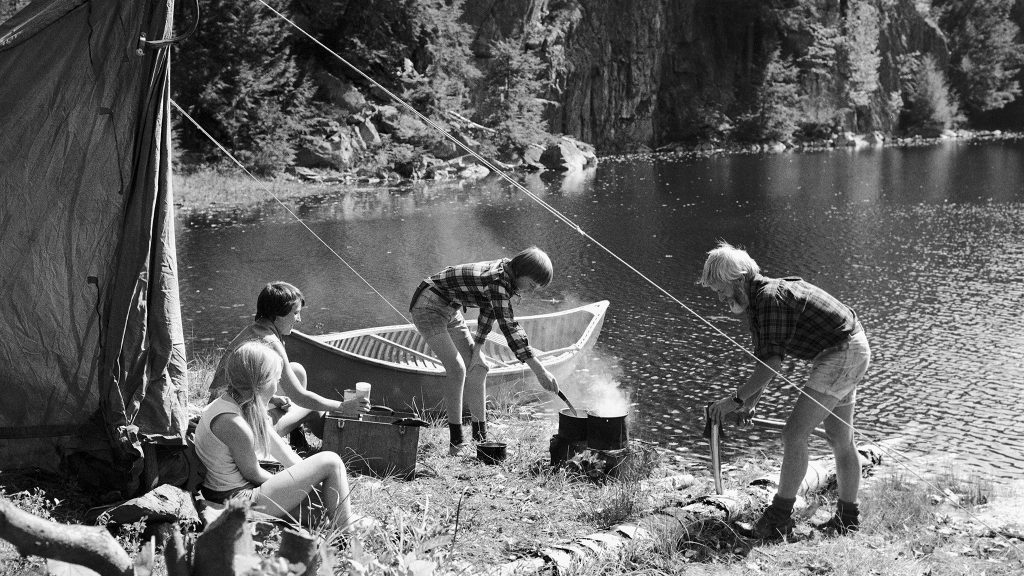
They explored ancient Ojibwe waterways as well as Lake Superior. Most of the film was shot silent, except for the long sequence on Lake Superior, for which soundman Bev Davidson was brought in. As most of this sequence was shot on land, it was easier to have someone record sound. Davidson also recorded various other scenes on that particular trip. I should point out that the Mason family have high praise for Buck and Davidson, who they felt performed admirably in difficult shooting conditions.
The shooting locations were usually selected in advance, but they often had to be changed when weather conditions were not favourable. Quite a bit of the film was improvised. The sequence with the snake was one such moment, as was the sequence with the storm at the end. They simply shot what was going on as they came across it.

The Masons told me that everything was shot live. In other words, there were no rehearsals. The scene in which the canoe tips was shot as it happened. They had practiced tipping at home on flatwater while playing in canoes. With the camera running they ran the rapid several times and each time came a little closer to sinking until finally they filled up with water and tipped the canoe at the bottom of the rapid. Becky recalls that they were asked to ignore the camera.
After the bulk of the shooting was over, Buck and Bill Mason went back to film many pick-up shots. Bill arranged for his family to dub in their lines after the shooting was done. They wanted to avoid discrepancies in the children’s voices. After all, the film had been shot over a two-year period and the children had grown during that time.
While editing the film, Bill met musician David Campbell. He took him home to meet his family and Campbell played guitar for everyone. They loved his music, so he was asked to write songs for the film.
Song of the Paddle, Bill Mason, provided by the National Film Board of Canada
Song of the Paddle was shown in festivals around the world and won 10 awards, including three at the Canadian Film Awards for Best Direction, Best Cinematography and Best Sound Editing in the non-feature category. The film also won two awards at the American Itinerant Film Festival in New York in the Nature and Wildlife category. It was broadcast in Canada on many educational and network television stations from 1979 onwards.
Audiences and critics really connected with the film, but what did the Masons think of it? After all, this was a personal film if there ever was one. Becky and Paul both told me they enjoyed working on it and found it to be a fun experience. Joyce said that although it was a great deal of hard work, she enjoyed making it—but she cringed when she watched it. She felt vulnerable because it was “so real, hanging all our washing on the line.” She was very grateful that the kids had started canoeing at a very young age, as that made it that much easier to make.
Nearly 10 years after Song of the Paddle was released, Key Porter Books approached Bill Mason about publishing a book version of the film. This was released in October 1988, and it proved to be just as popular as the film.
I invite you to watch this beautiful film. In it, the Mason family share with us their love of the outdoors and their bond as a family. Now that spring is almost upon us, watching it might inspire you to share similar experiences with your own family.
Enjoy.
(A huge thank you to Joyce, Becky and Paul Mason for their recollections and anecdotes on the making of this film.)
